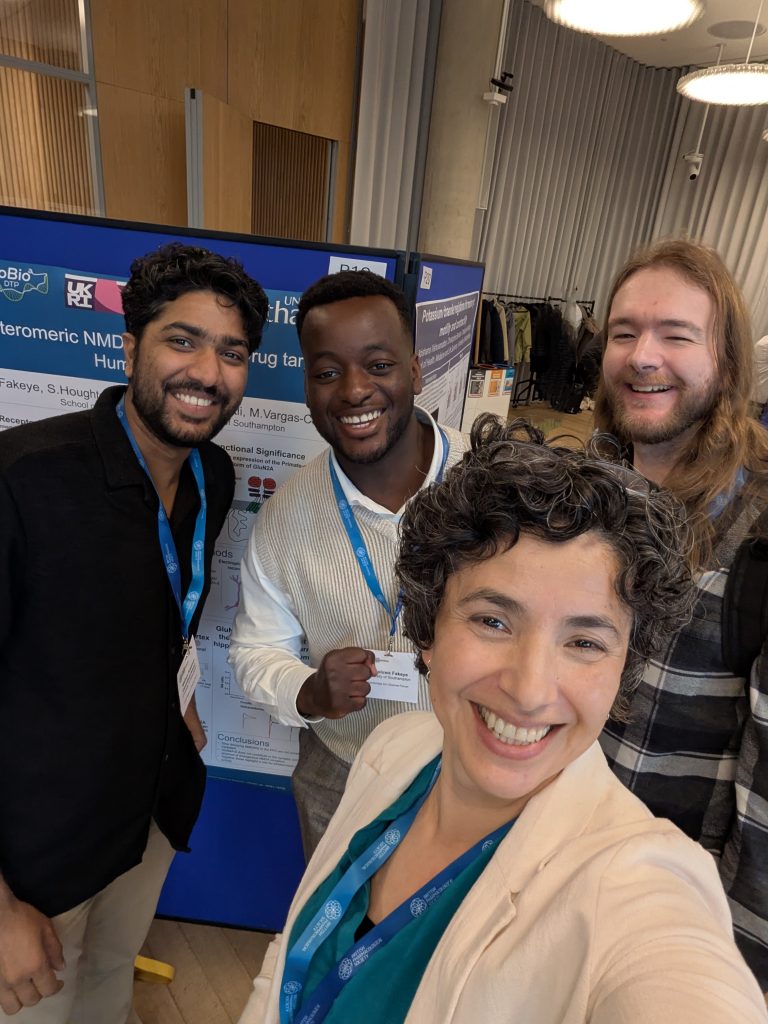Current members (2025):
Orelowa Fakeye. PhD student
Alexander Lowe. PhD student
Xavier Farrell MRes in Advanced Biological Sciences
Midhun Krishnan. Technician.
Chichi Onyiuke. MSc Neuroscience
Previous members:
Postdoctoral:
Dr. Ksenia Kurbatskaya
Funded by Rosetrees and Alzheimer’s Society.
Dr. Karla Salgado-Puga
Newton International Fellow.
PhD graduates:
Dr. Sarmi Sri. Thesis: “Emergence of synaptic and cognitive dysfunction in an inducible mouse model of Alzheimer’s disease.” Funded by Alzheimer’s Research UK.
Dr. Chrysia-Maria Pegasiou. Thesis: “Glutamate receptor composition in ageing human brain and in mouse models of synaptic degeneration“
Dr. Lauren McNicholas. Thesis. “The contribution of Src family kinases to synaptic function and plasticity in adult wild-type mice and an inducible mouse model of Alzheimer’s disease.” Funded by Alzheimer’s Research UK and Kerkut Trust.
Dr. Hannah Warming. “Haemoglobin neurotoxicity, haptoglobin scavenging and synaptic function in subarachnoid haemorrhage.”
Dr. Steven Houghton (2025). Thesis: “Human NMDA receptors: Functional insights into the two isoforms of the human GluN2A subunit.” Funded by SoCoBio DTP and the Institute for Life Sciences
Alumni awards
Philippa Richardson. Awarded VHP Southampton Neuroscience Prize 2016 for “Outstanding performance in a Master research project”.
Natalie Wood. Awarded the John W Caddick Vacation Scholarship in Neuroscience 2014.
